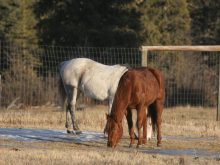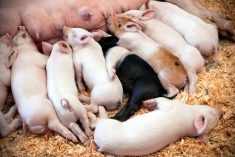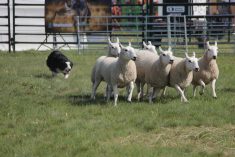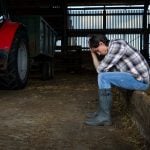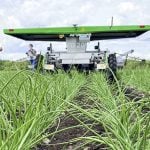LETHBRIDGE – Composting livestock and poultry that died of anthrax or avian influenza may be an effective way to kill deadly bacteria or viruses.
Scientists with Alberta Agriculture, Agriculture Canada and the Canadian Food Inspection Agency are measuring how long it takes to kill pathogens using superheated composting.
Kim Stanford with Alberta Agriculture worked with federal scientists at the Lethbridge Research Centre where 16 cattle carcasses are being composted. Concentrated levels of pathogens like Newcastle virus, E. coli, campylobacter and other infectious diseases are added in special cages to the compost to see if the process kills them. Preliminary inspections showed they were killed because the compost reached temperatures of 50 to 70 C.
Read Also

Why selenium is still an important factor in horse health
Selenium is an essential equine trace mineral that supports antioxidant defense, muscle integrity, immune function, metabolism and thyroid activity.
The CFIA is interested in knowing if composting could kill anthrax spores. Work is ongoing in the Ottawa region.
Anthrax is caused by a spore forming pathogen and resides in the soil for many years. When the soil is disturbed because of flood or drought, the spores can be stirred up by animal action and deadly infections can occur. There is no firm evidence that composting can destroy the spores, but Stanford is confident it will work.
“We don’t have proof of that and knowing we can get compost so hot to 70 degrees C, if the microbes can chew through bones, it should be able to destroy anthrax spores,” she said.
The Lethbridge project mimics what might be done on the farm.
A large enclosure with walls of large square bales was built May 15 and was lined with lagoon plastic. The walls are three bales high. Weeping tiles have been used for drainage and aeration pipes to deliver oxygen were inserted into the pile, which is covered with the plastic to prevent organisms from escaping. Tires hold the plastic in place.
The compost consists of a thick layer of straw on the bottom followed by the cattle obtained from renderers. All died of common feedlot conditions like bloat or pneumonia.
The cattle were placed on their sides without touching because carcasses do not seem to degrade properly if the bodies touch. They have been covered with a thick layer of feedlot manure that was run through a spreader to loosen it.
When the pile was first built, it reached over the walls. By the end of July, it had shrunk below the first bale level. There is no odour and it does not attract scavengers.
“It only stinks to high heaven if you are not getting oxygen. If you are not doing it right, you are going to get the smell,” Stanford said.
Greenhouse gas emissions are constantly monitored and the researchers have detected methane releases.
The pile will be opened in September to see how effectively the carcasses have broken down.
The next project will experiment with more cattle packed closer together in colder temperatures.
Stanford has had considerable experience composting dead chickens and sheep and promotes this method rather than allowing dead livestock to decay in the open.
At this point, composting large animals is not allowed in Alberta but researchers hope this study will help change regulations and create an effective on-farm disposal practice.



